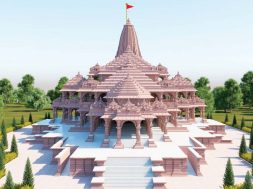Green building, greener future
Green building isn’t only a style statement; green building has become the saviour for sustainability and better tomorrow
India has been experiencing an unprecedented construction boom. India’s floor space is expected to increase rapidly and miraculously. Buildings account for an approximate of 35-40 per cent of total final energy consumption in India. The building energy use is growing at 9 per cent annually.
Energy-efficient criteriaEnergy-efficiency factors in buildings vary according to geography, climate, building type and location. However, according to Anurag Bajpai, Director, GreenTree Building Energy Pvt. Ltd., there are two basic criteria: energy consumption and comfort. He explains, “ Any building that consumes less energy can be verified through its electricity bill. If the electricity bills are less than the normal buildings than certainly the building can be called as an energy-efficient building. Any building which has less energy consumption doesn’t mean that the building is energy efficient because energy efficiency should not be at the cost of comfort of the users.”
Pankaj Kaushal, VP, REPL, describes the energy-efficient criteria very nicely. He has presented a list to judge whether a building is energy efficient or not:• Reducing environmental impact• Use energy-efficient materials• Broaden outlook on environmental, social and economic concerns through life cycle assessment• Waste reduction.
According to S. P. Anchuri, Architect and Structural Engineer, Anchuri & Anchuri, “The energy efficiency of a building is the extent to which the energy consumption per square metre of floor area of the building measures up to established energy consumption benchmarks for that particular type of building under defined climatic conditions.”
He adds, “Benchmarks are applied mainly to heating, cooling, air-conditioning, ventilation, lighting, fans, pumps and controls, office or other electrical equipment, and electricity consumption for external lighting. The benchmarks used vary with the country and type of building.”
Perfect design of energy-efficient buildingsEnergy efficiency starts with the design process which is the fundamental in any case. “There is no such typical process of doing it,” says Mr Bajpai. “Each building designed has its different orientation depending upon the location and the conditions prevailing over there. These parameters define the design of the building which in turn affects the level of energy efficiency.”
Designs which gain less heat from outside resulting in appropriate comfort condition is a fundamental of deigning. But by simply switching off the light is not the measure of energy consumption. One needs to have the comfort also. Until you don’t have the comfort in the building you cannot say that the building is a good building.
According to Mr Kaushal, “Buildings can be designed to meet the occupant’s need for thermal and visual comfort at reduced levels of energy and resources consumption. Energy-resource efficiency in new constructions can be effected by adopting an integrated approach to building design.”However, Ar. Anchuri talks about focusing more on control system which is very important to the energy efficiency of the building as well as to the comfort of the building’s occupants.”
Hence we should know and understand the control system mainly building controls.
Energy harvest vs energy conservationA zero-energy building means the total energy used by the building on an annual basis is equal to the amount of renewable energy created on the site. “It is true that a building has a long life cycle,” explains Mr Kaushal, “so its effect on the environment is also a long and continuing issue to consider. Yes, we have a vision of a world in which buildings consume zero net energy. It is ambitious, but ambition is necessary to achieve the progress needed to address climate change and energy use.”
He also talks about three main approaches to energy neutrality:• Cut buildings’ energy demand by using energy-efficient equipment• Produce energy locally from renewable and wasted energy resources• Creating buildings that can generate surplus energy and feed it into an intelligent grid infrastructure.
According to Mr Bajpai, “Energy harvest is a very good process, but energy conservation is much more important at this point of time because you harvest the energy from the sources which are abundant in nature. The applicability or the importance of harvest energy would be much more when we utilise it in more efficient buildings.”
He also explains that one cannot harvest energy by zero expenditure. One has to put solar panels wind mills which comes at a cost. In some cases, these measures don’t have a liberated return on investment.
Energy conservation means reducing energy consumption through using less of an energy service. Energy conservation differs from efficient energy use, which refers to using less energy for a constant service. According to Ar. Anchuri, driving less is an example of energy conservation. “Driving the same amount with a higher mileage vehicle is an example of energy efficiency,” he explains, “Energy conservation and efficiency are both energy reduction techniques. Even though energy conservation reduces energy services, it can result in increased environmental quality, national security, personal financial security and higher savings. It is at the top of the sustainable energy hierarchy. It also lowers energy costs by preventing future resource exhaustion. To ensure sustainable operations of wireless sensor systems,environmental energy harvesting has been regarded as the right solution for long-term applications.”
Challenges to build energy-efficient buildingsConstructing an eco-friendly building is price sensitive. Photovoltaics, new appliances, and modern technologies tend to cost more money. “Most green buildings cost a premium of more than 5 per cent,” explains Mr Kaushal, “but yield 10 times as much over the entire life of the building.”He also states, “The stigma is between the knowledge of upfront cost versus life-cycle cost. The savings come from more efficient use of utilities which result in decreased energy bills.”
Other challenges in building an energy-efficient building include building professionals tend to underestimate the contribution of buildings’ energy to climate change and to overestimate the cost of saving energy. There is a lack of leadership on building sustainability.
Mr Bajpai thinks that challenges are governed by two factors: required skill set and price. “Skill set because we don’t have so many professionals who have the experience in terms of designing,” explains. “Our market is also more price sensitive; we certainly spend less and try to get more.”
India and passive solar buildingsA passive solar home collects heat as the sun shines through south-facing windows and retains in materials that store heat, known as thermal mass. The share of the home’s heating load that the passive solar design can meet is called the passive solar fraction and depends on the area of glazing and the amount of thermal mass.
In India, design pattern is pretty much localised. To say Gurgaon might have a different pattern requirement while in Kerela it might be different. According to Mr Bajpai, “There is no such metric to measure in India if one looks at the consumption pattern and the design associated pattern. There are no such rules according to the designing patterns here in India.”
“The ideal ratio of thermal mass to glazing varies by climate,” Ar. Anchuri states. “Well-designed passive solar homes also provide daylight all year. Energy saving of up to 60 peer cent are achievable if buildings are designed using green design principles. The final selection of the design measures should be done after doing a cost-benefit analysis of the same.”
The time has come when green design should not be an isolated effort by an inspired individual, but a standard design process which should be adopted in all future buildings in India.
Cookie Consent
We use cookies to personalize your experience. By continuing to visit this website you agree to our Terms & Conditions, Privacy Policy and Cookie Policy.









